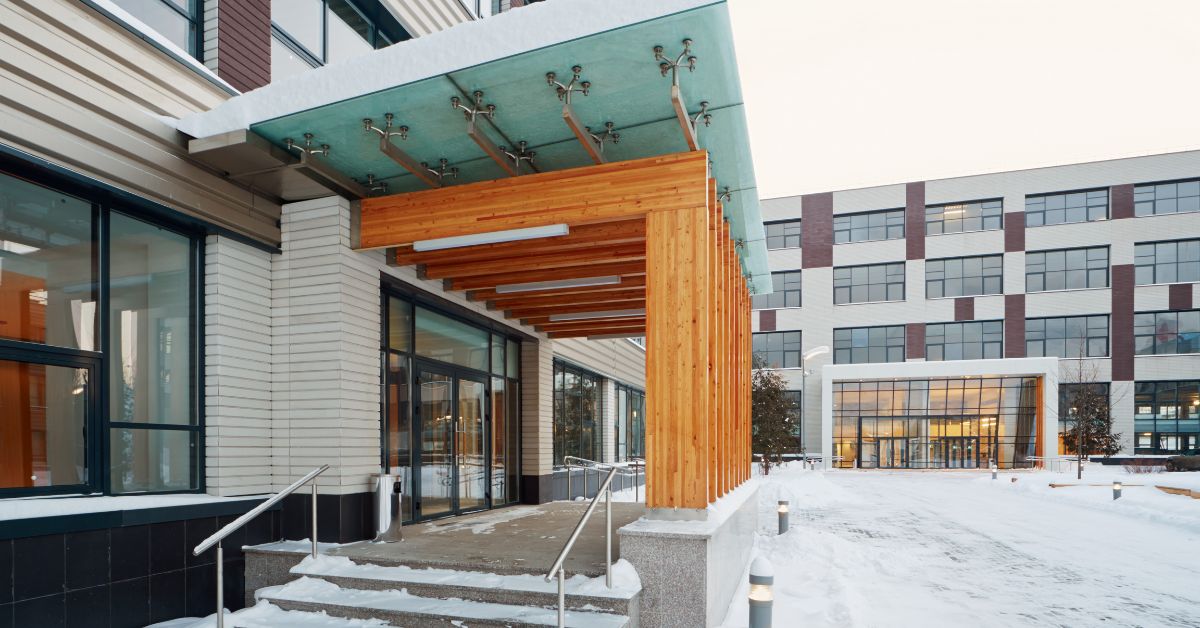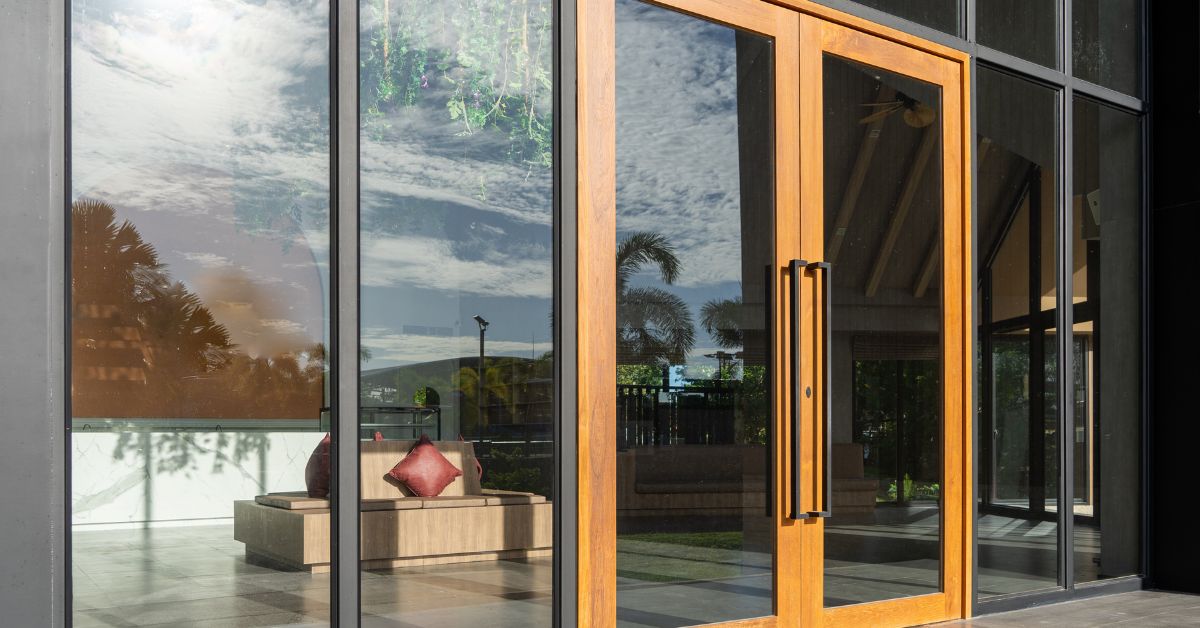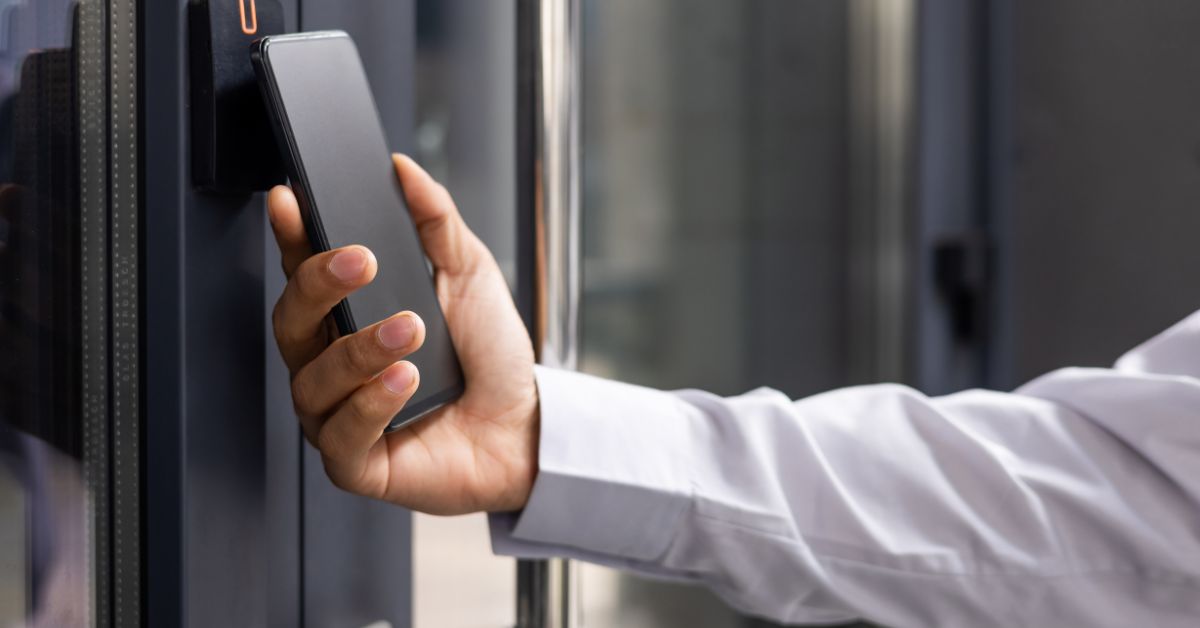How To Prepare Your Commercial Doors for Seasonal Changes

Inspect and Maintain Doorframes
Doorframes bear the structural load of commercial doors and create critical seals against weather infiltration. Start your seasonal preparation by examining frames for signs of wear, damage, or misalignment, all of which could compromise performance. Check for hairline cracks, especially around corners and mounting points, where stress concentrates during temperature changes. Metal frames often expand and contract at different rates than surrounding building materials, creating weak spots that require attention before extreme weather arrives.
Thoroughly clean frame channels to remove accumulated debris, salt residue, or corrosion, which can interfere with proper door operation. Pay special attention to drainage weep holes, which must remain clear to prevent water buildup—this can lead to frame deterioration.
Verify that frame anchoring systems remain secure by testing mounting bolts and brackets. Keep in mind that loose connections allow frames to shift during thermal expansion, creating gaps that reduce energy efficiency and invite moisture intrusion.

Weatherstripping Assessment and Replacement
Weatherstripping is the primary barrier between a building's interior and outdoor conditions. This critical component gradually degrades through normal use, making regular assessment essential for maintaining building envelope integrity.
Examine all weatherstrip surfaces for tears or hardening, which reduce sealing effectiveness. Run your hand along the entire perimeter with the doors closed to identify air leaks, which signal replacement needs.
Also, remember that different weatherstrip materials respond uniquely to seasonal changes. For instance, rubber compounds may crack in cold temperatures, while foam strips can permanently compress under heavy door usage. Before extreme weather tests their limits, replace any compromised sections.
Consider upgrading to higher-performance weatherstripping materials if your current system shows frequent failure patterns. Modern composite materials often provide superior durability and sealing performance across wider temperature ranges.
Door Hardware Lubrication and Adjustment
Commercial door hardware works harder during seasonal transitions, as temperature changes affect metal expansion and lubrication properties. Regular maintenance of hinges, locks, and operating mechanisms prevents costly failures and guarantees smooth operation.
Apply appropriate lubricants to all moving parts, selecting products designed for your specific hardware materials and operating environment. Avoid over-lubrication, which attracts dirt and debris that can jam mechanisms over time. Test the door closer hardware to ensure proper closing speed and latching force across the entire temperature range. Spring tension may require adjustment, as metal components expand and contract with seasonal temperature swings.
Check lock cylinder operation and key functionality; thermal expansion can create binding issues that leave doors difficult to secure. Most importantly, clean all locking mechanisms and apply graphite-based lubricants that won't attract moisture or freeze in cold conditions.
Glass Panel Protection and Maintenance
Glass panels in commercial doors face unique seasonal challenges from temperature differentials, impact risks, and thermal stress. Proper preparation protects these vulnerable components while maintaining visibility and aesthetics.
Minor damage often spreads rapidly when temperature changes create expansion and contraction cycles in the glass material. With this in mind, inspect glass surfaces for chips or cracks that could expand under thermal stress.
Thoroughly clean the glass using appropriate products that won't leave residue, which affects visibility and creates ice formation points in cold weather. Plus, check glazing compounds around glass edges for deterioration that could allow air infiltration.
Verify that glass panels remain properly secured within their frames. Loose glass can rattle during wind events or shift enough to break the seals around the perimeters, compromising both security and weather resistance.
Threshold and Floor Seal Evaluation
Thresholds create the bottom seal for commercial doors. These components face constant wear from foot traffic and exposure to weather elements. Examine threshold surfaces for wear patterns, cracks, or damage, which could allow water infiltration or create tripping hazards. Aluminum thresholds may show oxidation or mechanical wear; these reduce sealing effectiveness over time.
Check adjustability mechanisms that allow threshold height modifications to maintain proper door clearances. Seasonal building settlement or thermal movement can alter door-to-threshold ratios, requiring periodic adjustment.
To prevent water backup, which can damage flooring and create slip hazards, clean drainage channels within thresholds. Blocked drains force water to find alternative paths, often leading to structural damage or mold growth.
Security System Integration Checks
Typically, commercial door security systems integrate multiple components that respond differently to seasonal environmental changes. With comprehensive testing, you can ensure that these systems maintain protection levels regardless of weather conditions.
Test electronic lock mechanisms and access control readers for proper operation across temperature ranges. Cold weather can affect battery performance and the function of electronic components.
Verify that security cameras and sensors maintain clear sight lines and detection capabilities despite seasonal changes in lighting conditions or potential obstructions from weather accumulation.
Check backup power systems for security components, as seasonal storms often create power interruptions that test emergency operation capabilities. Replace batteries and verify that your generator is in working order before you’re faced with extreme weather conditions.

Schedule Professional Maintenance
When it comes to commercial doors, some maintenance tasks require professional expertise and specialized tools beyond typical facility management capabilities. Strategically scheduling professional services maximizes door system reliability while controlling maintenance costs.
Schedule comprehensive door system inspections before peak weather seasons, when service demand increases and emergency repairs become more expensive. Professional technicians can identify potential issues before they cause failures.
Coordinate warranty inspections and manufacturer-recommended maintenance procedures according to seasonal schedules that align with your building's operational requirements. Many warranty provisions require professional maintenance documentation. Establish relationships with qualified door service providers who can respond quickly to emergencies during extreme weather events. Having prearranged service agreements reduces downtime and ensures priority response when problems arise.
Protecting Your Investment Year-Round
Your commercial door systems are significant capital investments that reward proactive maintenance with extended service life and reliable performance. Now that you understand how to prepare your commercial doors for seasonal changes, you can protect these investments while keeping your building accessible, secure, and energy efficient.
To support your building's seasonal preparation and maintenance needs, visit DoorHub today. Explore our high-quality products designed to keep your property safe, efficient, and ready for any season!

Author
Greg Richard
Chief Technical Officer and Founding Member of DoorHub.com